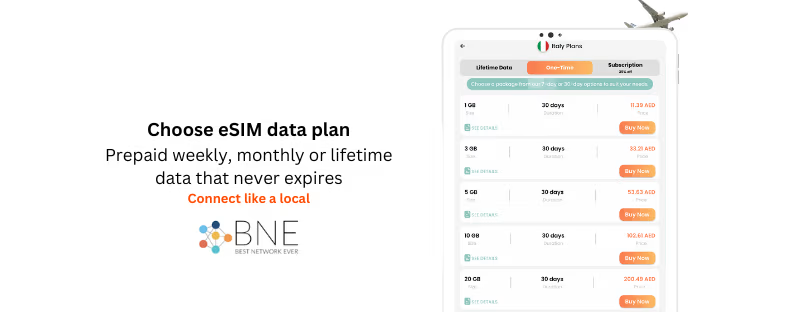
What is National Roaming?
In today’s increasingly connected world, mobile telecommunications have become an essential part of daily life. People rely on their mobile devices for communication, information access, and various services regardless of their location. However, network coverage can vary significantly across different regions within a country, especially in areas with challenging geography or sparse population. This is where national roaming comes into play as a critical solution to ensure continuous connectivity.
National roaming is a telecommunications arrangement that allows mobile phone users to access network services outside their primary provider’s coverage area without changing carriers. When a user travels to a region where their carrier has limited or no service, their phone can automatically switch to a network operated by a different provider that has a stronger presence in that area. This seamless transition ensures that users remain connected for calls, texts, and data services regardless of their location within the country.
The concept of national roaming is particularly valuable in large countries with diverse topography, where network coverage can vary dramatically between urban centers and rural areas. By enabling partnerships between different network operators, national roaming helps bridge coverage gaps and provides a more comprehensive service to mobile users. However, while national roaming offers significant benefits in terms of connectivity and convenience, it also comes with certain challenges, costs, and regulatory considerations that must be carefully balanced.
This article explores the concept of national roaming in depth, examining its definition, technical implementation, benefits, challenges, and real-world applications across different countries. By understanding how national roaming works and its implications for both consumers and service providers, readers will gain valuable insights into this important aspect of modern telecommunications infrastructure.
Definition and Concept of National Roaming
What is NationaI Roaming?
National roaming is a service that allows mobile phone users to access network services outside their primary provider’s coverage area without changing carriers. When a user travels to a region where their carrier has limited or no service, their phone can automatically switch to a network operated by a different provider that has a stronger presence in that area. This seamless transition ensures that users remain connected for calls, texts, and data services regardless of their location within the country.
In more technical terms, national roaming refers to
“the ability of a customer to automatically make and receive voice calls, send and receive data, or access other services, even when traveling outside the geographical coverage area of the home network, by means of using a visited network”.
This definition highlights the automatic nature of the service and its focus on maintaining the continuity of all mobile services.
NationaI roaming works as if the user is using cellular services abroad, but within the same country. The user’s SIM card is not on its home network but roams freely on other networks within the national boundaries. As Olivia Wireless (2019) explains,
“It’s a way of saying your SIM card has no home network, but can use any.”
This capability ensures that mobile users can stay connected even in areas with varying network coverage quality.
Distinguishing National Roaming from Other Types
It’s important to distinguish national roaming from other types of roaming services. While national roaming occurs within a single country, international roaming allows users to connect to networks when traveling abroad. The key difference lies in the geographical scope and the regulatory frameworks that govern these services.
Another related concept is regional or internal roaming, which typically refers to roaming arrangements within specific regions of a country or between affiliated network operators. National roaming, in contrast, often involves agreements between competing operators at a country-wide level.
Additionally, there’s a distinction between mandatory national roaming, which is imposed by regulatory authorities to promote competition or ensure coverage in underserved areas, and commercial national roaming, which is established through voluntary agreements between operators based on mutual business interests.
Historical Context and Evolution
The concept of national roaming has evolved alongside the development of mobile telecommunications networks. In the early days of mobile telephony, network coverage was limited, and roaming agreements were essential to provide wider service areas. As networks expanded and technology advanced, the nature and purpose of national roaming arrangements have changed.
Initially, national roaming was primarily used as a means for new market entrants to provide nationwide coverage while building out their own infrastructure. Over time, it has become a tool for addressing coverage gaps, enhancing network resilience, and promoting competition in the telecommunications market.
Regulatory approaches to national roaming have also evolved. In some countries, regulators initially mandated national roaming to help new operators establish themselves in the market. As markets matured, many regulators have shifted towards encouraging commercial agreements while maintaining oversight to ensure fair competition and consumer protection.
Today, national roaming continues to play a significant role in the telecommunications landscape, particularly in countries with challenging geography, sparse population distribution, or emerging market dynamics. Its implementation varies widely based on local market conditions, regulatory frameworks, and technological capabilities.
Technical Implementation of National Roaming
How National Roaming Works
NationaI roaming operates through a sophisticated technical process that enables mobile devices to connect to alternative networks when the primary network is unavailable. When a mobile device detects that it is losing signal from its home network, it automatically begins searching for available networks in the vicinity. Once it identifies a partner network with sufficient signal strength, the device initiates a connection process that involves several key steps.
The technical implementation begins with network searching, where the device scans for nearby networks when it loses its primary signal. This is followed by an authentication process, during which the device sends its credentials to request access to the alternative network. If the authentication is successful and there is a roaming agreement in place between the operators, the device is granted access to the visited network, allowing for a seamless handoff without interrupting ongoing services (Lebara, 2025).
According to Wikipedia‘s technical definition, the roaming process involves mobility management, authentication, authorization, and accounting (billing) procedures, collectively known as “triple A” or AAA. These procedures ensure that the user’s identity is verified, their access rights are confirmed, and their usage is properly tracked for billing purposes.
Network Agreements and Infrastructure
For nationaI roaming to function effectively, mobile network operators (MNOs) must establish formal agreements that outline the terms of service, including pricing, coverage specifics, and technical requirements. These agreements typically involve extensive testing processes, such as those conducted by the International Roaming Expert Group (IREG) and the Transferred Account Data Interchange Group (TADIG), to ensure proper functioning of communication links and accurate billing.
The infrastructure supporting national roaming includes specialized network elements that facilitate the exchange of subscriber information between operators. When a user attempts to connect to a visited network, that network contacts the user’s home network to verify their identity and service entitlements. The home network maintains a record of the user’s current location, allowing calls and messages to be correctly routed to them even when they are on a different network.
As Wray Castle (2024) explains,
“Your mobile provider establishes agreements with other network operators to facilitate this process, ensuring you have access to the best available signal.”
These agreements are crucial for maintaining service quality and managing the financial aspects of roaming.
Regulatory Framework
The implementation of national roaming is heavily influenced by regulatory frameworks that vary from country to country. Regulatory bodies often play a significant role in determining how national roaming is structured, priced, and made available to consumers.
In some countries, regulators mandate nationaI roaming to promote competition, particularly to help new market entrants establish themselves. For example, the Uganda Communications Commission has established guidelines that define the terms and conditions under which operators must provide national roaming services to their competitors.
Other regulatory considerations include spectrum allocation, infrastructure sharing requirements, and pricing controls. These regulations aim to balance the need for competition with the economic realities of network deployment, ensuring that national roaming serves the public interest without unduly burdening operators.
The European Union has been particularly active in regulating roaming services, with initiatives aimed at reducing costs and improving transparency for consumers. While these efforts have primarily focused on international roaming between EU member states, they have also influenced approaches to national roaming within individual countries.
Technical Challenges and Solutions
Implementing nationaI roaming presents several technical challenges that operators must address. One significant challenge is maintaining consistent quality of service across different networks, as performance may vary based on the infrastructure and technology deployed by each operator.
Another challenge involves managing the handover process between networks to minimize disruption to active calls or data sessions. This requires sophisticated signaling protocols and coordination between the home and visited networks.
Security is also a critical concern, as roaming arrangements must protect user data and prevent unauthorized access. This involves implementing robust encryption and authentication mechanisms to safeguard communications across network boundaries.
To address these challenges, operators employ various technical solutions, including advanced network management systems, real-time monitoring tools, and standardized protocols for inter-operator communication. These solutions help ensure that nationaI roaming provides a seamless and secure experience for users while maintaining operational efficiency for operators.
Benefits and Drawbacks of National Roaming
Benefits of NationaI Roaming
Enhanced Coverage and Connectivity
One of the most significant advantages of nationaI roaming is the enhanced coverage and connectivity it provides to mobile users. By allowing access to multiple networks, national roaming ensures that users can maintain communication services even in areas where their primary provider has limited or no coverage. This is particularly beneficial in countries with diverse topography, such as mountainous regions, remote rural areas, or sparsely populated territories, where building comprehensive network infrastructure may not be economically viable for every operator.
As noted by Lebara (2025), national roaming
“provides users with enhanced coverage and connectivity by allowing them to switch networks, ensuring they remain connected even in remote or rural areas.”
This improved reach translates to more reliable service with fewer dropped calls and more consistent data connectivity, enhancing the overall user experience regardless of location.
Improved Network Resilience
National roaming significantly contributes to network resilience, providing a valuable backup mechanism during network outages or emergencies. According to the European Union Agency for Cybersecurity (ENISA) report “National Roaming for Resilience” (2013), national roaming can be instrumental in mitigating mobile network outages. When one network experiences technical failures, natural disasters, or other disruptions, users can automatically switch to an alternative network, maintaining essential communication services during critical situations.
Olivia Wireless (2019) highlights this benefit, stating that “in case of a network outage, it switches to another network for continued service.” This resilience aspect is increasingly important as societies become more dependent on mobile communications for everyday activities, emergency services, and business operations.
Market Competition and Consumer Choice
NationaI roaming can foster healthier market competition by enabling smaller operators or new entrants to compete effectively with established players. Without national roaming, new operators would need to build extensive network infrastructure before attracting customers, requiring enormous capital investment. With roaming agreements in place, these operators can offer nationwide coverage from day one while gradually developing their own infrastructure.
This increased competition typically leads to better service offerings, more innovative products, and potentially lower prices for consumers. It also provides consumers with more choices, allowing them to select providers based on factors other than coverage alone, such as customer service, pricing plans, or specialized features.
Cost Efficiency for Operators
For mobile network operators, nationaI roaming can offer significant cost efficiencies by reducing the need for duplicate infrastructure in low-traffic or challenging areas. Instead of each operator building and maintaining their own towers in every location, they can share coverage through roaming agreements, optimizing capital expenditure and operational costs.
This efficiency is particularly valuable in the context of new technology deployments, such as 5G networks, which require substantial investment. By sharing coverage through national roaming, operators can allocate resources more strategically, focusing their infrastructure investments in high-demand areas while ensuring comprehensive coverage through partnerships.
Drawbacks and Challenges
Potential Cost Implications for Consumers
While nationaI roaming offers numerous benefits, it can also lead to increased costs for consumers if not properly regulated or competitively priced. As Wray Castle (2024) points out, “national roaming fees apply when you connect to a partner network outside your provider’s standard coverage area. These fees can include higher rates for calls, texts, and data usage compared to your regular plan.”
These additional charges can be unexpected for users who are unaware of the terms of their mobile plans, potentially leading to “bill shock” when traveling to areas where national roaming is activated. The pricing structure for national roaming services varies widely between operators and countries, with some including it in standard packages while others treat it as a premium service with associated surcharges.
Quality of Service Variations
Users on nationaI roaming may experience variations in service quality compared to when they are on their home network. This can manifest as differences in call clarity, data speeds, or feature availability. The visited network may have different technical capabilities, congestion levels, or service priorities that affect the user experience.
Lebara (2025) acknowledges this limitation, noting that “network performance may vary across different providers.” These inconsistencies can be frustrating for users who expect uniform service regardless of their location or the network they are connected to.
Technical and Operational Complexities
Implementing and maintaining nationaI roaming arrangements involves significant technical and operational complexities for mobile operators. These include establishing compatible systems for authentication, billing, and service delivery across different network infrastructures, as well as managing the handover process between networks.
The complexity increases when operators use different technologies or are at different stages of technological evolution, such as when one operator has deployed 5G while another is still primarily operating 4G networks. As Olivia Wireless (2019) notes, this can create challenges when “you use 2G hardware and your operator discontinues the 2G service,” requiring careful management of technology transitions.
Regulatory Challenges and Market Distortion
NationaI roaming presents regulatory challenges in balancing competition, investment incentives, and consumer protection. If mandated too aggressively, national roaming could potentially discourage infrastructure investment, as operators might prefer to rely on competitors’ networks rather than building their own. Conversely, if left entirely to commercial negotiations, dominant operators might refuse reasonable roaming requests or charge excessive fees, limiting competition.
Finding the right regulatory approach requires careful consideration of market conditions, geographical factors, and policy objectives. As noted in the Botswana Communications Regulatory Authority’s assessment (2013), different countries have adopted varying approaches based on their specific circumstances, with some mandating national roaming for limited periods while others rely on commercial negotiations with regulatory oversight.
Security and Privacy Concerns
NationaI roaming can introduce additional security and privacy considerations, as user data traverses multiple networks operated by different entities. This requires robust security protocols and clear agreements regarding data protection responsibilities between the home and visited networks.
Users may also face challenges in identifying which network they are connected to at any given time, potentially creating confusion about applicable service terms, security measures, or troubleshooting procedures. This lack of transparency can undermine user confidence and complicate issue resolution when problems arise.
Examples and Case Studies of National Roaming
European Union Approaches
The European Union has seen various implementations of nationaI roaming across its member states, each with unique characteristics and outcomes. In Poland, telecom operator P4 established a national roaming agreement with Polska Telefonia Cyfrowa in 2012 specifically to address coverage gaps in their network. This arrangement allowed P4 to provide comprehensive service while continuing to develop its own infrastructure, demonstrating how national roaming can serve as a stepping stone for growing operators (ENISA, 2013).
Finland presents another interesting case study, where the regulatory approach has evolved over time. As documented by Sutherland (2011), Finland initially mandated national roaming to help new entrants establish themselves in the market. However, as the market matured, the regulatory framework shifted toward encouraging commercial agreements while maintaining oversight to ensure fair competition. This evolution reflects the dynamic nature of national roaming regulation and its adaptation to changing market conditions.
The United Kingdom has also implemented nationaI roaming in specific contexts, particularly to address rural coverage issues. In areas where building multiple networks would be economically unfeasible, operators have entered into sharing agreements that effectively function as nationaI roaming arrangements. These agreements have helped extend coverage to previously underserved communities while avoiding duplicate infrastructure in sparsely populated regions.
Asia-Pacific Implementations
In the Asia-Pacific region, nationaI roaming has been implemented with varying approaches and objectives. Australia has considered national roaming as a means to improve coverage in rural and remote areas, where the vast geography presents significant challenges for comprehensive network deployment. According to Optus’s submission to the Australian Competition and Consumer Commission (2016), international examples of national roaming have informed Australia’s approach, particularly regarding price regulation and coverage incentives.
New Zealand has taken a different approach, focusing on commercial agreements rather than regulatory mandates. As Sutherland (2011) notes, New Zealand’s regulatory framework has allowed operators to negotiate nationaI roaming arrangements based on market conditions, with regulatory intervention limited to ensuring fair competition and consumer protection. This market-led approach has resulted in effective coverage expansion while maintaining investment incentives.
In India, nationaI roaming has been a significant factor in the telecommunications landscape due to the country’s size, diverse geography, and large population. The regulatory framework has evolved to balance the needs of established operators with those of new entrants, using national roaming as a tool to promote both competition and coverage expansion in underserved areas.
African Context
The African continent presents unique challenges and opportunities for national roaming implementation. The African Competition Forum’s cross-country study on international roaming charges highlights the importance of roaming arrangements in addressing connectivity challenges across the continent. While primarily focused on international roaming between African countries, the study also touches on national roaming practices within individual nations.
Botswana provides a detailed case study through its Regulatory Impact Assessment on National Roaming (2013). The assessment examined various approaches to national roaming regulation, considering the experiences of other countries and the specific conditions of Botswana’s telecommunications market. The study concluded that a balanced approach, combining elements of commercial negotiation with regulatory oversight, would best serve the country’s needs for expanded coverage and market competition.
Uganda has developed comprehensive guidelines for nationaI roaming, as evidenced by the Uganda Communications Commission’s Guidelines on National Roaming (2019). These guidelines define nationaI roaming as “the ability of a customer to automatically make and receive voice calls, send and receive data, or access other services, even when traveling outside the geographical coverage area of the home network, by means of using a visited network.” The regulatory framework aims to promote infrastructure sharing while ensuring fair competition and consumer protection.
Resilience-Focused Implementations
Some countries have implemented nationaI roaming specifically to enhance network resilience and emergency preparedness. The ENISA report on “National Roaming for Resilience” (2013) highlights how national roaming can serve as a critical backup mechanism during network outages or emergencies. When one network experiences technical failures, natural disasters, or other disruptions, users can automatically switch to an alternative network, maintaining essential communication services during critical situations.
Research from the University of Twente (Weedage, 2024) further explores this aspect, investigating “in which regions and to what extent each MNO can benefit from infrastructure sharing or national roaming” for resilience purposes. The study found that strategic implementation of national roaming could significantly improve network availability during crises, providing a valuable tool for emergency management and critical communications.
Commercial Models and Business Cases
Beyond regulatory approaches, various commercial models for national roaming have emerged across different markets. As noted by Christian Omeni on LinkedIn (2024), “National Roaming has the potential to be a win-win for both operators and subscribers. The roaming operator benefits from expanded coverage and cost savings.” This perspective highlights how well-structured national roaming agreements can create value for all stakeholders.
The TechnoEconomy Blog (2014) observes that “National Roaming can be attractive for relative low traffic scenarios or in cases where the product of traffic units and national roaming unit cost” makes economic sense. This business-oriented view emphasizes the importance of careful economic analysis in determining when and how to implement national roaming arrangements.
These diverse examples and case studies demonstrate that national roaming is not a one-size-fits-all solution but rather a flexible tool that can be adapted to various market conditions, regulatory objectives, and geographical challenges. The success of national roaming depends on finding the right balance between promoting competition, ensuring coverage, maintaining investment incentives, and protecting consumer interests.
Conclusion
National roaming represents a significant aspect of modern telecommunications infrastructure, offering solutions to coverage challenges while raising important considerations for regulators, operators, and consumers. As this article has explored, national roaming provides a mechanism for mobile users to maintain connectivity across diverse geographical areas by accessing multiple networks, enhancing the overall telecommunications experience.
The benefits of national roaming are substantial. It extends coverage to areas that might otherwise remain underserved, improves network resilience during outages or emergencies, fosters market competition by enabling smaller operators to compete effectively, and offers cost efficiencies by reducing duplicate infrastructure. These advantages contribute to a more connected society where mobile services are accessible regardless of location.
However, national roaming also presents challenges that must be carefully managed. These include potential cost implications for consumers, variations in service quality across different networks, technical and operational complexities for operators, regulatory balancing acts, and security considerations. Addressing these challenges requires thoughtful policy approaches, transparent business practices, and ongoing technological innovation.
The diverse implementations of national roaming across different countries demonstrate that there is no universal approach to this concept. Each market has adapted national roaming to its specific circumstances, regulatory objectives, and geographical challenges. From the European Union’s evolving frameworks to Africa’s emerging policies, national roaming continues to be shaped by local conditions while drawing on international best practices.
Looking to the future, national roaming is likely to remain an important tool in the telecommunications landscape, particularly as networks evolve toward 5G and beyond. The increasing demand for ubiquitous connectivity, the high costs of new network deployments, and the critical importance of communications resilience all suggest that national roaming will continue to play a valuable role in ensuring that mobile services are available to all.
For consumers, understanding national roaming and its implications can help in making informed choices about mobile service providers and plans. For operators, strategic approaches to national roaming can enhance service offerings while optimizing investment. For regulators, balanced frameworks for national roaming can promote both competition and coverage, serving the broader public interest.
In conclusion, national roaming represents a complex but essential component of modern telecommunications systems. By enabling seamless connectivity across different networks, it helps fulfill the promise of mobile communications: to keep people connected wherever they go. As technology continues to evolve and societies become increasingly dependent on mobile services, the importance of effective national roaming arrangements will only grow, making this a critical area for ongoing attention, innovation, and refinement.














